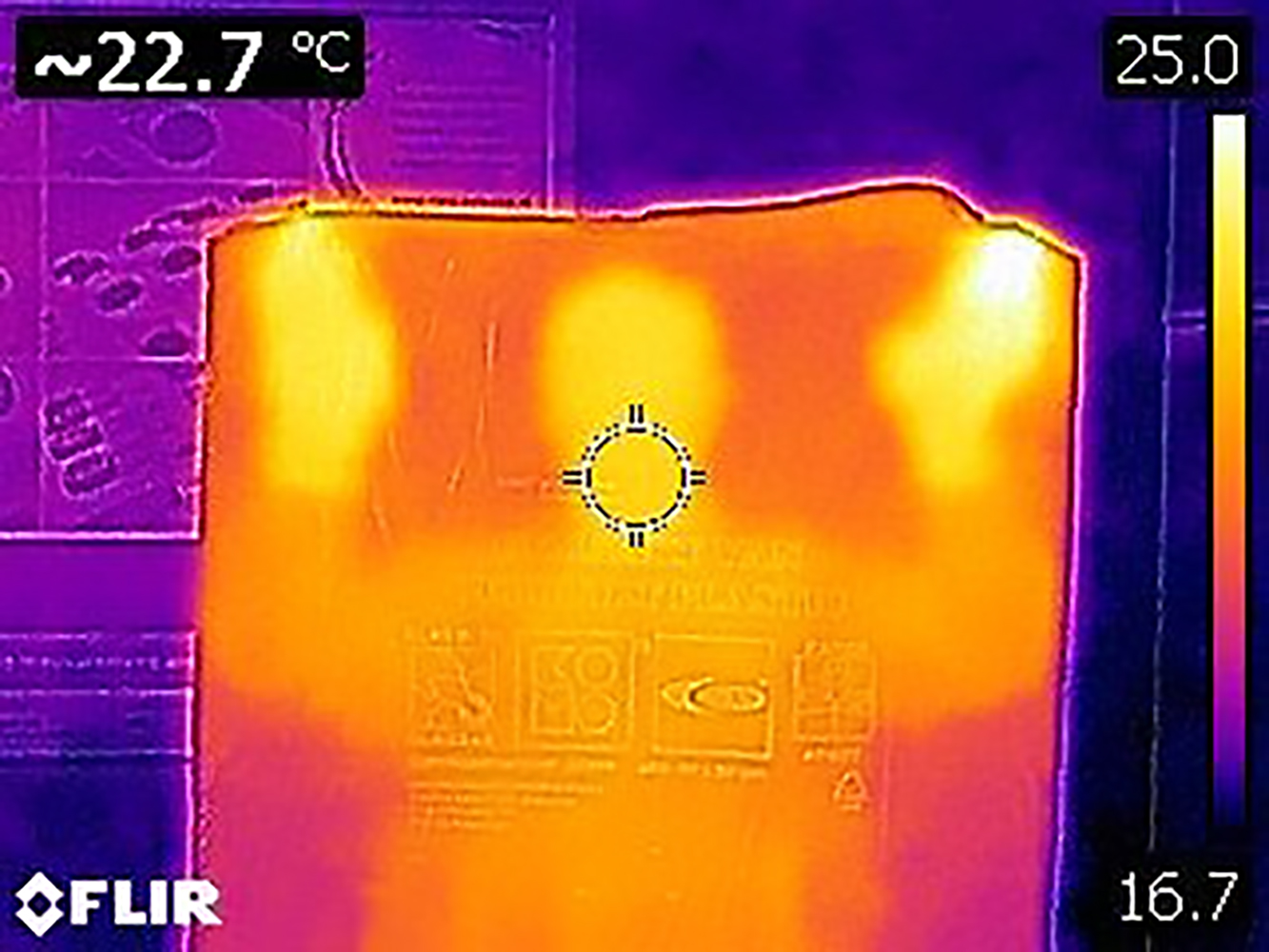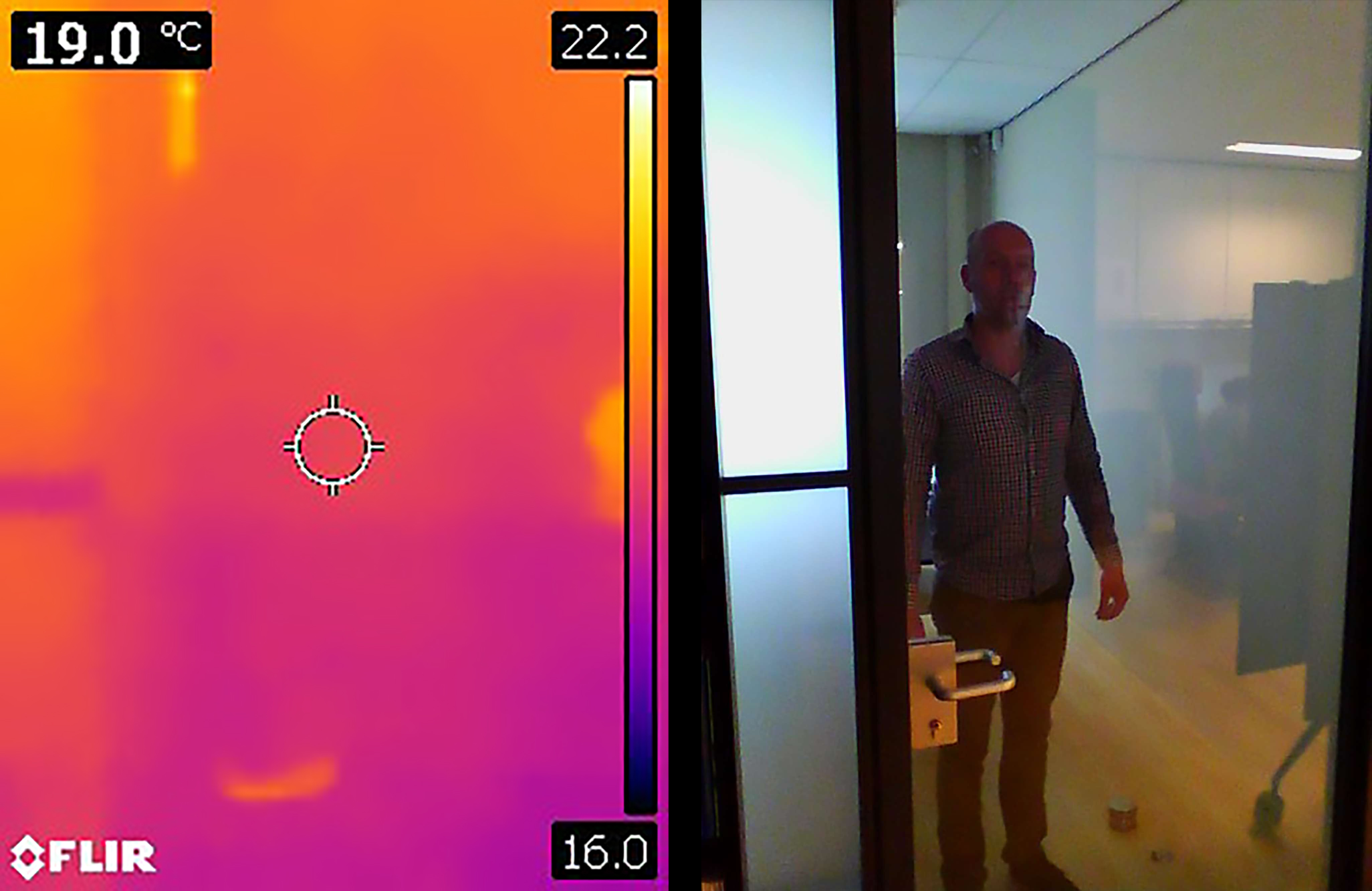15.4. Surprising infra-red investigations#
| Author: | Norbert van Veen |
| Time: | 10 minutes |
| Age group: | 12 - 18 |
| Concepts: | infrared, visible light, absorption, transparency |

Fig. 15.11 The person is standing behind a garbage bag but is still clearly visible in infrared.#
Introduction#
Infrared radiation is a well-known subject in physics. Students get acquainted with it in junior secondary and learn about the properties of this kind of radiation in senior secondary. This demonstration is suitable for both junior and senior secondary physics. With the help of the IR- camera (FLIR) which can take photos and video, we can show the world in visible light and IR on an interactive white board or screen.
Equipment#
Black garbage bag
Glass plate/door/window
IR camera (we used the FLIR C-series C2, C3 C5)
Preparation#
Make sure you have a garbage bag and a glass plate. Connect the IR-camera to the computer and set it to streaming mode so that you can use the live streaming feature of the camera. Show the IR video on a digibord or screen with any camera app on your computer.

Fig. 15.12 The person is not visible in infrared behind glass, though visible in the visible light spectrum.#
Procedure#
Ask students to mention differences and similarities between IR and visible light.
Point the IR camera to objects that are heat sources and explain that the camera creates false colors so that we can distinguish areas with different temperatures. (The camera assigns different colors to different IR radiation).
What will the IR camera show when a student is behind a glass window? Let students predict first and subsequently try.
Place a student behind a glass plate and film the student in the infrared modus (not in MSX mode). Students notice that infrared radiation does not pass through the glass.
What does the glass do with IR? Does it absorb infrared, or does it mirror infrared? How can you test your answer with this equipment?
Use this experiment to discuss transparency, opacity or absorption of objects for electromagnetic radiation. For example, UV radiation and glass.
Physics background#
Visible light is not absorbed by the glass, but is absorbed by the black garbage bag. The opposite is true for IR radiation. Glass reflects infrared like a mirror.
Tip
When filming students behind a glass window, point the IR camera at a slight angle, or else you film your own IR reflection.
Photograph yourself in front of a metal surface (for example aluminum foil), the photo will then indicate almost 37 degrees Celsius as surface temperature. You just measured the temperature of your body and not the temperature of the metal surface!
Follow-up#
Investigate if IR radiation penetrates all kinds of plastic bags. Can you find material that is the most transparent to IR radiation? Of course, there are countless possibilities for research with an infrared camera. For example, where is the greatest heat loss of a person? Is there a difference between bald people and people with a lot of hair? What is the influence of a beard? Are there diseases that you can diagnose with infrared ‘thermometry’?
